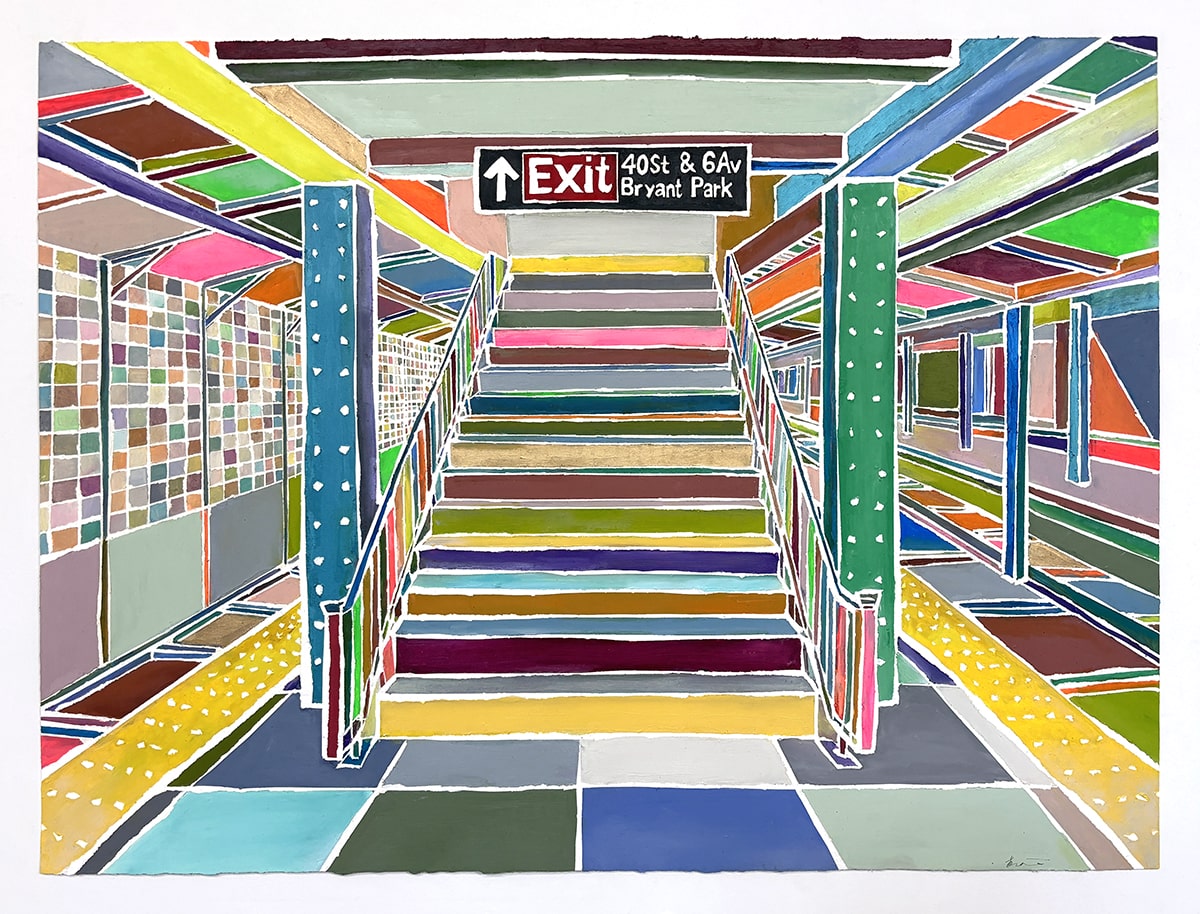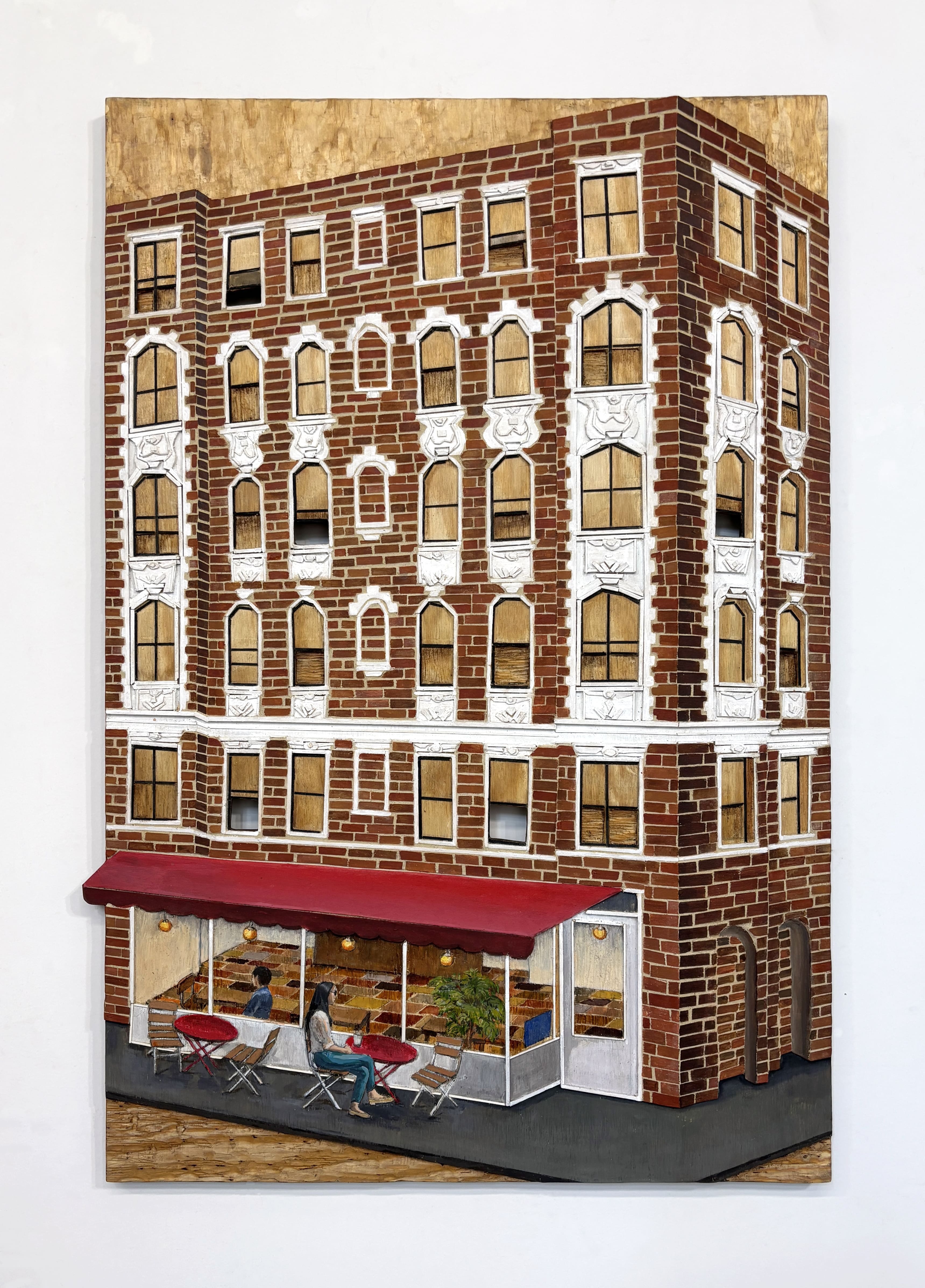Heejung Cho lives and works in New York, where she pursues an artistic practice deeply rooted in the resonances of memory. Trained first at Seoul National University, where she earned a bachelor’s degree in sculpture, she later moved to the United States to expand her academic and creative path. She holds a Master of Fine Arts from the Mason Gross School of the Arts, a decisive stage that broadened her relationship to materials and form. Her relocation to New York also led her to an artist residency at the Elizabeth Foundation for the Arts, a fertile ground for her first experiments in the metropolis.
It was within this context that she presented a major work at the Museum of Arts and Design (MAD) in New York. Two monumental sculptural panels reimagined the perspectives of Columbus Circle, Broadway, and 8th Avenue, as if memory itself had reconstructed them from fragments. Visitors were invited to step inside the installation, to feel the vertigo of its shifting lines and depths, with a spectral view of Central Park and Broadway unfolding through its windows. The experience was at once a traversal of the city and an immersion into a personal memory, shared, distorted, and reconfigured.
Cho’s practice centers on the fragile mechanics of memory, on the subtle shifts that, over time, erase the clarity of familiar places and dissolve them into architectural abstractions. Her works emerge from this oscillation, from the moment when an image no longer remains precise but becomes raw material for imagination. Facades and landmarks decompose into planes, volumes, and fragments. Memory does not faithfully return what it has stored, it reconstructs, alters, and reinvents.
Through concrete, wood, cardboard, and plaster, she transforms raw matter into sensitive archives. Each fragment of wood or piece of construction debris, found in her wanderings, bears a singular story, a faint trace of a past use. In her collages and sculptures, these elements are not mere scraps; they become metaphors for scattered identities, recomposed into interior landscapes. By assembling them with meticulous care, Cho maps a deeply personal cartography of memory.
The artist herself describes her process as one of reconstructing spaces and figures from memory and imagination. Boundaries between representation and abstraction blur, much like the workings of memory itself, which never preserves things intact. The dialogue between figure and space becomes a shifting dynamic of line, texture, and color, a pursuit of the invisible energy that circulates between people and their surroundings.
The fragments of wood she gathers, each carrying its own hue, grain, and history, embody this diversity. Brought together within a single work, they replay the encounter of multiple individualities, forming perspectival landscapes infused with reimagined memory. In this reassembly, Cho conjures a renewed sense of belonging, granting meaning to materials once abandoned.
Through woodblock printmaking and casting in resin or plaster, she further extends the life of these fragments, fixing their presence into permanence. Materials once destined for disappearance are transformed into enduring vessels of memory. Her practice thus resides in a space between reconstruction and preservation, between recollection and invention. Heejung Cho’s work unfolds as a poetry of reconstituted space, not nostalgia frozen in time but an invitation to see memory itself as a living construction site, endlessly open, endlessly becoming.




